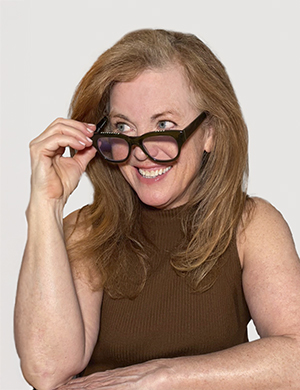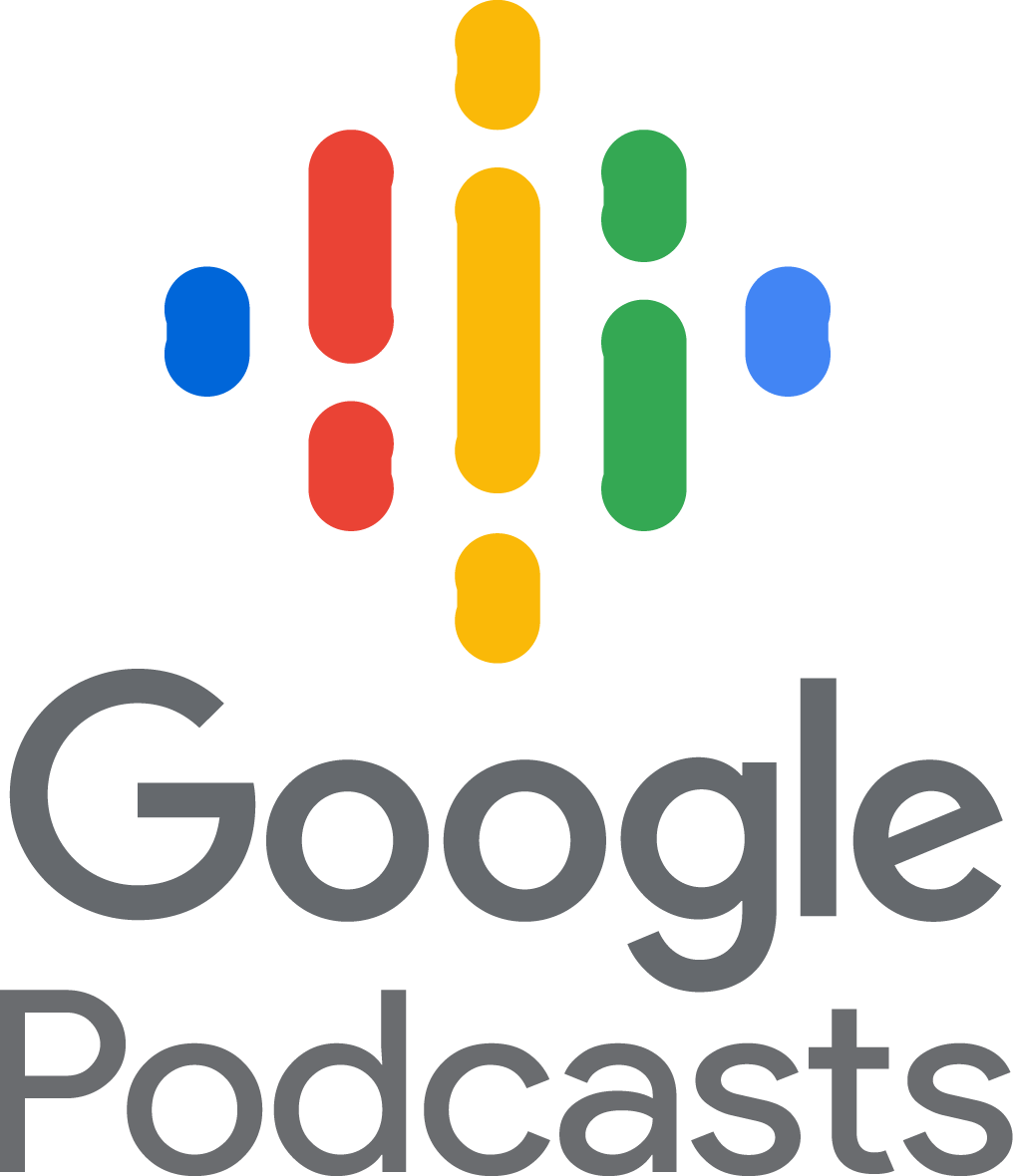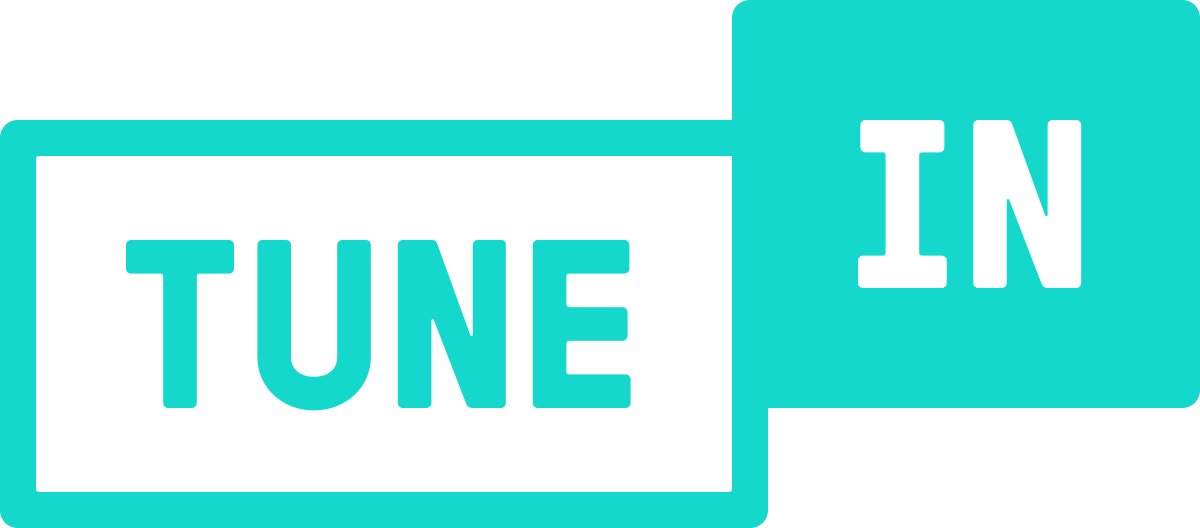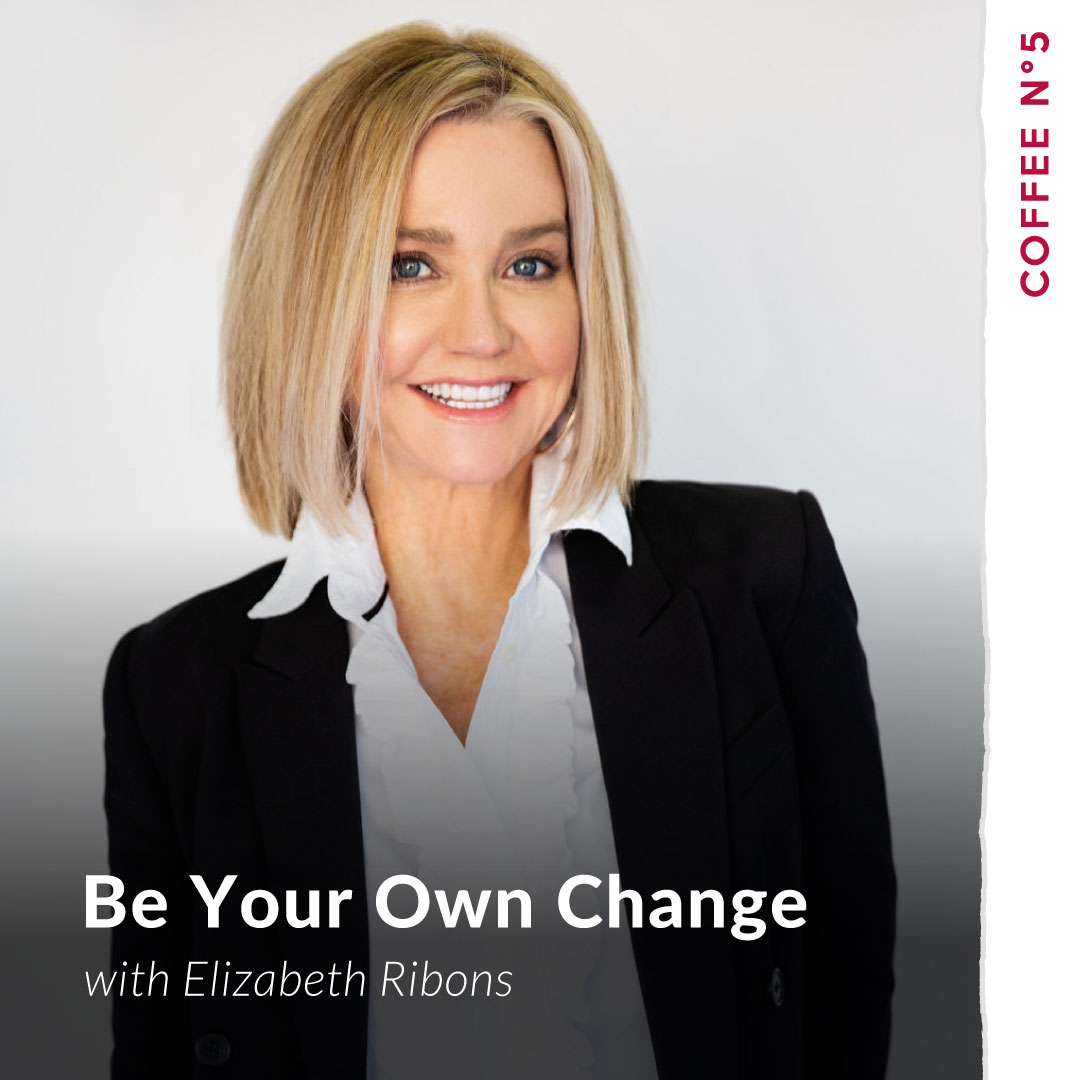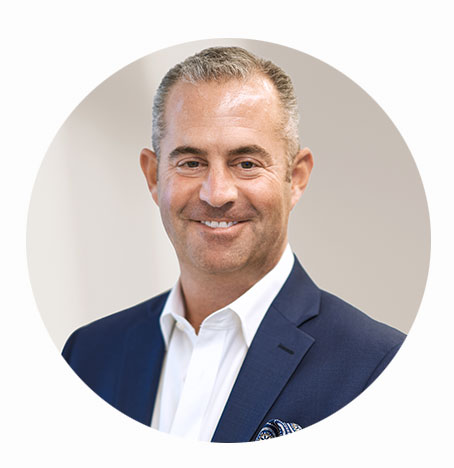Lara Schmoisman (00:12)
Hi everyone. Welcome back to coffee number five. Is your coffee ready? is. So I want to tell you a story. Like I always tell you a little tidbit of my life because this is who we are and I’m curious. But when I started my career after I graduated and you don’t really know what you’re to do with your life, you’re between jobs maybe, I found…
in non-paid position helping one of my teachers. And it was a class of communication. And maybe when you take that class, you are always there for the grade. But when you start teaching, and that’s one of the reasons I started teaching later on in my life too, was that to really teach something, you need to understand the concepts in a different way. And that was so valuable to me because I…
really understand the bottom line of communication. mean, I’m not no expert whatsoever, but understanding the basics of communication, it was a night opening. So I think that in these times that we are communicating in so many ways, in so many platforms, and we are still ourself. Doesn’t matter in the platform that you use or the way that you use to communicate.
how you can transition your personality or your brand personality, it’s something essential. So today I want to bring you an expert and on someone I know for a little while and I super respect, Jean Meyer. Did I say it right? Meyer, sorry. And the accent came out in the weird places. Welcome. Thank you so much for being here with us today.
Jeanne (01:51)
Myer. That’s okay. ⁓
I’m excited to catch up and talk communications.
Lara Schmoisman (02:05)
Yes, so what was your first approach to communication and that you said, ⁓ this is something that I’m interested in.
Jeanne (02:14)
that’s a great question. I think I was one of those people that took full advantage of the university experience, both in the classroom and outside of it. And it was just very formative, but I really didn’t know what I wanted to do. And I went into journalism school at a very respected journalism school, very competitive. And ⁓ it was the first year that they’d actually introduced ⁓
a course on advertising, on the paid side of journalism. And I mean, it was a million years ago, but it was pretty radical at the time. This is the University of Missouri. It’s one of the top four, you two or three journalism schools in the country. And I was in this bifurcated spot. I couldn’t really decide how I wanted to channel my talents, broadcast journalism, or do I want to help brands sell more stuff?
⁓ I was also really into political science, the Venn diagram of all those things is that you have to really understand how to connect with an audience. And that’s when I think I found my superpower, which is I really, really love to coach people and help brands make that connection with impact. So I think it really started at Mizzou.
I did start my career as a broadcast journalist for a hot second, and then kind of quickly went into political consulting and corporate communications after that.
Lara Schmoisman (03:53)
The beauty of communications, and I think that this is something that is not discussed a lot, is that basically there are two types of communication, verbal and non-verbal.
Jeanne (04:03)
Mm.
Lara Schmoisman (04:04)
And I don’t think that we talk enough about that because there’s so many ways that we’re communicating. though we don’t realize, like for example, whoever is listening to this podcast, they don’t see my expressions. And so there is a lot that you are missing from this communication and you might get a different experience that someone who is seeing me.
they see me moving my hands, which I do a lot, but there is something to be said that. And it’s not the same that how we talk, that what we write.
Jeanne (04:41)
yeah, I mean, really great historical anecdote, which is the very first televised presidential debate in the US was Richard Nixon versus John F. Kennedy. And the trick question I always ask in media training sessions is who won? Who won the debate? And the answer is both of them. And the reason for that is that Nixon hands down dominated the debate in…
the ears of people that were just tuning into the radio and the folks who’ve tuned in to watch on television, ⁓ hands down, went for the more charismatic, handsome, telegenic John F. Kennedy. And it was a real defining moment in how people communicate and had to learn to communicate differently to adapt to a different medium. You know what I mean?
Lara Schmoisman (05:35)
Yeah.
So today, and I know that you’ve been working, tell us a little bit where you’ve been. So people, mean, you were working companies with toys, you were working in banks, you were working everywhere. So you had to get different skills because it’s not the same vocabulary that you use working for a bank that for a toy company, basically.
Jeanne (05:57)
Yeah,
I guess the best way to describe what the type of communications that I have done professionally is to describe it as ⁓ not too dissimilar to what a White House communications director does. That is a person who sits atop all of the different agencies and moving parts of the government to make sure everyone is singing off the same hymn sheet and speaking with a unified voice.
A lot of times that is, you need to make sure you’ve got stuff happening on the front foot and you’ve got to make sure you’ve got a team ready to take the shrapnel and the inbound that might be coming in so that you’re ensuring that you’re making a positive impact. And as I like to call it, you’re putting positive deposits in a reputation bank because you’re going to need them later. And you also have a team that is hoping, helping to mitigate
any kind of negativity that could happen. And that’s a little different than just like publicity or PR. It is a component of it, but I have done that at places like ⁓ Unilever. That’s where I actually started in my career in environmental affairs. Went on to do a lot of agency work in then media and entertainment. And then, ⁓ you know, that was supporting things like lawsuits, litigation. In the entertainment industry, there’s a lot of that.
I went to work for Toys R Us and that was ⁓ the mandate there was their e-commerce site had ⁓ gotten off to a really bad start when it started selling toys online. ⁓ And they messed up their first season and they got a lot of bad headlines about, know, coal in the stocking. And the brand was just, it was the PR disaster of the year. So I actually went into bat, you know, sort of play cleanup there and helped turn that brand around.
Lara Schmoisman (07:36)
All
Jeanne (07:53)
⁓ And then, yeah.
Lara Schmoisman (07:54)
Let me ask you a question before we continue,
because I found this fascinating that communications, of course, is communication and you know the rules, but also you need to be respectful of the voice of the brand. So do you find that when you went to work with, or in these experiences that you just mentioned, that you found a cohesive brand voice or is something that you had to go in and say, okay, let’s first fix a brand voice and then we can start working.
Jeanne (08:07)
Totally.
Lara Schmoisman (08:24)
Do you think that that’s a problem for brands?
Jeanne (08:27)
Well, yes, and right now in this day and age, it’s really hard, especially for purpose-driven anyone who’s, know, there’s an expectation now that brands have values. And we’ve seen this major whiplash from brands really leaning into wanting, into things like DE &I and ⁓ sustainability and things like that. And we all know that because of the political climate, ⁓
that is scary for brands. They’re not sure if they should continue to lean into that. But I think the brands who from the day, from the get-go, from day one said, this is what we stand for, ⁓ those are the brands that are being courageous and shouldering on. And ⁓ these are public companies that are not capitulating to political pressure. And they’re saying, this is what we’re gonna continue to do.
know, Costco is a notable example. It’s hard. It’s hard.
Lara Schmoisman (09:29)
Yeah, that’s one of the facts. It is hard,
very hard because also our vocabulary, our voice evolves and evolves with the times. So it’s like you refresh a logo, also you need to refresh all your colors, you need to refresh the way you talk because the language evolves.
Jeanne (09:51)
Well, that doesn’t mean you can’t adapt a voice or evolve it over time, you know, what this is really shot, this whole pivot, this whole whiplash culturally, what it’s really shown is it’s shown many brands true colors. ⁓ You see the brands who are essentially being very performative in what they were doing. know, maybe they went out and hired a very high profile
Lara Schmoisman (10:10)
Mm-hmm.
Jeanne (10:21)
chief diversity officer only to lay that person off two years later. ⁓ To me, that was performative. That goes in that column. It’s really unfortunate. But I mean, there are as many brands who are still committed to diversity because their audience, the folks they’re selling to are diverse. It’s not just ⁓ being nice. It’s about, it’s
pure marketplace imperative. If you don’t have people working at your company and speaking, every employee is an ambassador of a brand speaking out, right? If you don’t have a diverse workforce, ⁓ how can you sell to a diverse audience? You know what I mean? Yeah.
Lara Schmoisman (11:06)
Absolutely, but
also there is so many other places that I see and I’ve seen this problem. Everyone who knows me knows how important I believe in search everywhere optimization and that you need to have the same brand voice across all the platforms that we communicate in.
I feel like there are brands right now that they’re working with so many agencies or so many different people and everything is so subdivided in different departments that that voice gets diluted depends where you are and you are losing the cohesiveness of who you are.
Jeanne (11:55)
Yeah, you’re absolutely right. And I think it’s become more complicated with ⁓ the nichefication of all the different media platforms. I mean, when you think about the number of streaming platforms and YouTube itself within TikTok, how many talks are there? There’s so many very tiny slices and…
There are brands that are frankly relevant to many, different niches and it’s tricky to ensure they’re speaking out in a way that there’s some underlying consistency, but they’re also doing in a way that connects to that particular niche.
Lara Schmoisman (12:40)
And
what would be your recommendation to fix that problem?
Jeanne (12:45)
Well, you it all starts, and you know this from being a veteran marketer, it starts with that brand house, having a solidified brand house where you have pillars that are not going to change, you know, that stand for
Lara Schmoisman (12:58)
I love
pillars. Why people say that the pillars are outdated.
Jeanne (13:03)
No, they’re important. And it doesn’t necessarily mean that, you if you stand for ⁓ quality ⁓ or luxury, that that won’t change over time, but actually it shouldn’t. A luxury brand is a luxury brand. And it’s a reminder, you know, that you need to consider the quality and craftsmanship that goes into luxury.
Lara Schmoisman (13:23)
But how
about the pillars? Are the pillars all the same across all platforms or I’m playing devil and the quiet here because this is a challenge you cannot sometimes it’s very difficult to maintain the pillars in different platforms.
Jeanne (13:30)
Well, let me…
Yeah, and it’s hard, you you’ve been there, you work with a new brand who’s just starting to develop their brand voice and their brand house and their pillars. And that’s why you need to be, ⁓ these are things that need to, you need to live with them for 20 years, right? You can’t say this is what we want to do for the next two. ⁓ And so it’s qualities like, ⁓ you know, might be humor, might be a pillar.
⁓ It might be something that, again, luxury could be one of those pillars. ⁓
Lara Schmoisman (14:16)
The
important thing about pillars is consistency to me.
Jeanne (14:20)
And that’s going to inform what I am a big fan of. And it’s a tool I’ve continued to use for decades is a Hym sheet. And what that is, is we’ve all seen visual brand guidelines. That’s really, really important, the do’s and don’ts. But the Hym sheet is something that you use internally to talk to all stakeholders. Your employees.
Lara Schmoisman (14:42)
Yeah,
in my agency, we call it the Bible, the client’s Bible. So we, yeah.
Jeanne (14:47)
Yeah, hymn sheet Bible. I call it like the,
the motherboard, the messaging motherboard is something that I often refer to it. But the way you arrange it is you think those pillars, how are the pillars going to inform how we talk to the marketplace consistently at this moment in time. So the pillars don’t change. The messages might, they might evolve. ⁓ and so I like to sort of boil it down to three to four big overarching ideas that are.
Lara Schmoisman (14:54)
Okay, I like that.
Jeanne (15:17)
talking points, but they’re big, master, you know, they’re sort of big, broad, visionary talking points. And then within them, you include all of the data points that bring those things to life. And the thing is, is that if you do it right, those overarching messages are going to be relevant to whatever audience you’re talking to. So yeah, you might introduce a little bit of slightly different language talking to investors.
as you would if you were a brand aiming at Gen Z, right? But there’s still the ideas, the core, the foundational ideas are still going to be there. And that is important. And that’s the thing that, know, as someone who’s leading a big organization with lots of moving parts, you have to constantly make sure people are speaking in that one voice. You know, here’s an interesting anecdote.
LinkedIn is a very powerful platform. We all know it in, in, you know, business communication. And I recently worked with a brand that was relaunching their own brand identity, a new name, new visual identity, kind of new way of showing up in the market. And we, we did some paid advertising and all of the advertising trades, but the thing that really moved the meter.
that really got the biggest engagement by miles was purely organic because we did a social media toolkit that had consistent messages and ideas and assets. And we encouraged the whole employee workforce, which was thousands of people all over the world to go out and use it, make it your own, ⁓ spread the word. And that had massive impact. So that’s just an example of the power of
being able to communicate consistently. And when you’re discordant, you know, it can go pear shaped very fast.
Lara Schmoisman (17:18)
So you mentioned something before talking about multiple niches. And I think that this is a way that really marketing had evolved over the years because before we didn’t have enough data.
So we were always putting people in brackets of age, sex, and basic things, or maybe location. Right now, we can get a lot more information from the data and see who is our consumer. So we can really, that group that we know that is our consumer, I will say dissected in multiple…
still they’re part of, because you cannot have multiple target audience, but you can have separate niches inside your target audience.
Jeanne (18:03)
For sure, yes. And I’d say that points to a really, really important principle in communication that we don’t talk about enough, ⁓ and it’s listening. The best communicators are world-class listeners. And that is true whether you’re a brand who is really trying to read the audience and understand sentiment and where people are.
And it’s true of being in a conference room. It’s true of being at a party. It’s true of talking to your children. ⁓ We’re not as a, I’ll just narrow it down to the U.S. As a nation, we’re lousy listeners. There’s a lot of people talking at each other. There aren’t enough people who are listening. And that is another big principle of great communication.
Lara Schmoisman (18:52)
Mm-hmm.
Yeah, that’s ⁓ mostly now in the social world is all about social listening. So how can you get this social listening involved in your main communications? Because you’re an expert on the master global ⁓ umbrella communication of a brand. And also something that I really want to ask you is because you were, heard or overheard the conversation talking about when communication goes wrong.
Jeanne (19:03)
Definitely.
Lara Schmoisman (19:26)
and how to fix it.
Jeanne (19:26)
Yeah.
Yes. Gosh, where do I even start? ⁓ This is where why it’s really, really important for any brand, whether it’s a personal brand or a can of, you know, a beverage, a makeup brand, a fashion brand, an auto or a company, a corporate brand. It’s important to have an always on stream of communication.
that is constantly going to be representing your voice and putting it out into the universe and looking for those ways to connect. Because if you don’t, in times of trouble, you will go to your reputation bank and if there’s not enough there, you are in trouble. Like you really can’t, you have nothing to rest upon. The brands and the people and the things that have successfully been proactively
communicating and making an effort to make those connections organically, authentically. ⁓ Reputation banks, it works like compound interest and with real money, with real currency. It can grow exponentially and it can be extremely valuable when you need it most. ⁓ Not enough brands today, I think a lot of emergent brands think you can pay your way or perform your way to ⁓
revenue and success, but that’s a short-term proposition. They also need to be having a kind of an overlay that’s a little more organic.
Lara Schmoisman (20:58)
very short.
Yeah,
I always say that they are not growing a brand. You’re selling a collection of products. A brand is about thinking about the long way, the long game and how your kids or grandkids and when you’re not here anymore, that this brand will survive you.
Jeanne (21:21)
Yeah, for sure. Well, you asked about ⁓ what I would just call crisis communications. And, you know, that is a different ball game now than it ever used to be. ⁓ You know, it was…
Lara Schmoisman (21:27)
Yes, crisis communication.
Well,
I know that working in the entertainment industry, crisis communication is a must and you always have to have a master there.
Jeanne (21:43)
For sure. Well, I was 15 years in the music industry. I was at EMI Music, running corporate communications in the Americas. And this is at a time, a very pivotal time for music, where big music companies were evil because we were trying to squash Napster. ⁓ you know, the music industry was changing from shiny round things like CDs and albums to digital, a whole different business model.
⁓ And it was a constant ⁓ effort to communicate the importance of protecting intellectual property and that narrative, it was hard. It was hard, but it was not impossible. And I mean, I think the important thing, ⁓ the other things that would bubble up is in entertainment industry, you’re not selling a can of soda. ⁓ Cans of soda do not have opinions and…
⁓ Don’t go to rehab and don’t get divorced and don’t delay the launch of their album ⁓ or get into some sort of legal trouble. And you’re dealing with human beings and an industry that there’s a huge fascination, not only with the end product, but the industry itself. People are fascinated with what goes on behind the scenes. It’s tricky.
Lara Schmoisman (22:43)
Thanks for
Yeah.
Absolutely.
It is very tricky. And here’s the question of the year, I think, because talking about emotions, a lot of people are using AEI to communicate these days. And AEI…
It doesn’t think about the perception of how people can take it. I don’t think we’re quite there yet. I don’t know if we will ever be, ⁓ or we need to give AI a lot of information for perception. So I think that it’s very challenging and I super encourage to use AI. I think AI is an amazing tool, but it doesn’t replace knowledge and experience. And this is something that you can only get as you do it and learn from it.
And then you can use AI to use your judgment to see what works and what doesn’t.
Jeanne (24:00)
100,000%. I, I, unfortunately, I think the way a lot of content, like people who create content creators are using AI and the predictions of how AI will just replace a whole class of, you know, professionals is it’s probably a little bit true, but it’s also a race to the middle. You know, it’s, it produced right now. And I think for the foreseeable, what AI can produce is just
very average and it’s not special and it doesn’t have a taste level and different qualities that only a human being can do. So I think it’s a collaborative, it’s got to be a collaborative effort.
Lara Schmoisman (24:37)
I’m
going to say something very mean. That the only people who will be replaced by AI is the lazy people who doesn’t want to use AI as a tool today and they don’t want to learn and they use it and get over it using AI. I okay, this is it.
Jeanne (24:43)
Okay.
Yeah, I have to say, I agree with you. ⁓ I do. ⁓ But it’s also completely having a radical impact on what we used to care about a lot was SEO. So that in a digital age, if you didn’t show up in search, you weren’t a brand. And now that has completely been rendered obsolete. And that’s where…
Lara Schmoisman (25:26)
We’re going to have
to agree on disagree on this. think SEO evolved too, and we need to use SEO in different ways that we used to use it. You cannot use SEO anymore just keywords. You need to do it by intention and across the ecosystem.
Jeanne (25:44)
Fair, but I guess where I was going with this is there’s a lot of ⁓ new data that shows that LLMs are going to prioritize authoritative content in a way just like SEO has that Google algorithm looking for authority, but it’s perhaps ⁓ going to be a little bit more influenced by what I would call earned media, the organic stuff that
It includes things like news articles, press releases, things like that. I used to think press releases were really on their way out. I’m not so sure anymore. As a tool to memorialize something that’s new or happening, that’s gonna be an important ⁓ thing to inform.
Lara Schmoisman (26:32)
100 %
and I really encourage my clients to do press releases when they have something new because I think it’s a tool that now can be indexed and it has authority.
And also I think that one of the things a lot of people are forgetting is that they still SEO is important, but they forget to structure their data for AI and to be recognized by AI. So I think that if we use SEO as an evolution, we cannot be thinking the same SEO that from 20 years ago.
Jeanne (27:10)
Absolutely.
So I have to ask you, communicate, we as a nation communicate a lot like you and I are doing with like a video, kind of over video, tiny boxes. Maybe your eyes aren’t looking exactly where they should be. So what’s your pet peeve when you’re talking to somebody in a video conference? What is your pet peeve? Like if you had a team member and you really wanted to give them feedback on something they should stop doing, I’d love to hear it.
Lara Schmoisman (27:13)
Yes.
My pet peeve is in, we have a rule at the Darrell that is that everyone who needs to peeve would come around.
Because I do believe in facial experience and I feel like this is we work remote but the only people but you need to look at the person if you’re having a relationship with your teammate you need to really see maybe someone is saying something serious, but you’re winking or You can create a lot more relationship seen to each other and their expressions
Jeanne (28:09)
Yeah, I get you for sure. ⁓
Lara Schmoisman (28:11)
Like you
hear a dog barking, but the dog can be barking and moving the tail. It’s a very different barking that the dog is really upset and the tail is not moving.
Jeanne (28:24)
that’s a great analogy. love that. I have to say that one of my pet peeves about the way people communicate now, it’s not necessarily about video conferencing, but it’s what I call uptalk. Uptalk, there’s this certain cadence that a lot of generations use and everything ends on an up note and everything sounds like a question. And what uptalk does is it undermines
I think intelligence, credibility, and when you modulate your voice a little bit more, and you can be a little more emphatic. And I don’t know, that’s something I train away. I really work hard to get clients not to do. ⁓
Lara Schmoisman (29:10)
Oh, have
to tell me if I do it offline. Oh, good. Thank you. Thank you. I study years for that. And it’s something that intonation is super important in communication. I don’t know if you know this about me, but I worked in radio for many years.
Jeanne (29:13)
No, you’re not doing it. A plus, you’re good.
Okay.
Absolutely.
I do remember you telling me that.
Lara Schmoisman (29:32)
And so it’s so important how you communicate. It’s the same that when you write, one of the things that I always tell my team, even my designers is read out loud of the message. Don’t just put text because how would you use an intonation when you read this message? It will give you cues of how to put that text.
Jeanne (29:45)
How are you?
Great point.
Lara Schmoisman (29:58)
Because you want, mean, I always say like in an email marketing, what is going to make you open an email marketing? The subject light is verbal. Immediately when you see an email, it’s going to be the nonverbal part of the attraction of what you’re communicating. But the ones who are going to make you click and create a conversion is again, the verbal part that they’re communicating. So if you’re not communicating with intention or designing with intention,
make it get lost.
Jeanne (30:30)
Yeah. Well, you I think we’re the few, like kind of in the years ahead, there’s also this new dynamic of, I was looking for my phone, here it is, ⁓ of folks, there’s too much of this in like conference rooms you’re seeing this. You know, people are looking down at their phone or certain generations don’t know how to actually pick up the phone and call somebody. They are,
Lara Schmoisman (30:56)
yeah.
Jeanne (30:57)
just so hardwired to want to text only. It’s crazy.
Lara Schmoisman (31:01)
Okay,
can I tell you my biggest communication problem? And I had this discussion with my niece last week or two weeks ago. I absolutely despise stickers. I cannot stand stickers when people send stickered messages because I’m always, I never think literally. I’m thinking the multiple expressions or
implications that that sticker. So I’m always doubting myself and it’s like, why didn’t use words to communicate and that’s it.
Jeanne (31:38)
Stickers, emojis, it’s crazy and it’s very different. I think we don’t even know what communication is gonna look like in five years time. When you just think about how the media landscape changed so dramatically just in the last 12 months, ⁓ I’m just really, I’m a student of media and like how it has evolved over time. I’m really gonna be watching it closely to see how…
people actually communicate verbally and how they behave. mean, there’s a whole generation of people who entered the workforce when we were during COVID and they weren’t showing up and they couldn’t emulate people like what people were doing.
Lara Schmoisman (32:09)
Mm-hmm.
Yeah,
but also as I learned screenwriting and it’s all about the character and how the character feels and how we communicate, how it shows emotions. You cannot show the whole emotion with a heart. There’s a lot more to say. It’s not just, love you. I love you because of this. I’m feeling…
Jeanne (32:38)
Yeah.
Lara Schmoisman (32:46)
not a little upset. I’m feeling very upset. There are levels of everything that I feel like we’re losing in just making the fast, the quick transaction of communication. I feel communication became transactional.
Jeanne (33:00)
For sure, yeah.
Lara Schmoisman (33:02)
⁓
we got really philosophical here.
Jeanne (33:05)
Well, but you know, when it comes down, you just think about the last time you went to some kind of cocktail party networking event, the best conversations you have are the ones that are just like really free ranging and nobody’s talking about where they went to school, what they do for a living or where they work or what kind of car they drive. They’re talking about big ideas and what’s that Maya Angelou phrase? I love it so much. It’s something about people,
don’t necessarily remember ⁓ what you do or what you say. It’s how you make people feel.
Lara Schmoisman (33:41)
Absolutely. Absolutely. And I think this is a great way to finish our conversation because I really hope that you guys feel warm and cozy because this conversation, even when we talk about a lot about communications and how to connect with others at the end of the day is how in order to have honestly, and I’ve been doing over 200 podcasts right now and I can, you can totally, thank you.
Jeanne (34:04)
Congratulations.
Lara Schmoisman (34:06)
I can tell you in the other side, the audience can feel when I don’t feel comfortable in a podcast. can feel so at the end of the day is over the phone, over the microphone, over the video conference, how, or in real life, how you make other people feel. Thank you so much. Thank you so much for being here and having coffee with me.
Jeanne (34:24)
Yeah. You said it.
It was a lot of fun.
Lara Schmoisman (34:32)
And to you guys, I will see you next week with more Coffee Number 5.
